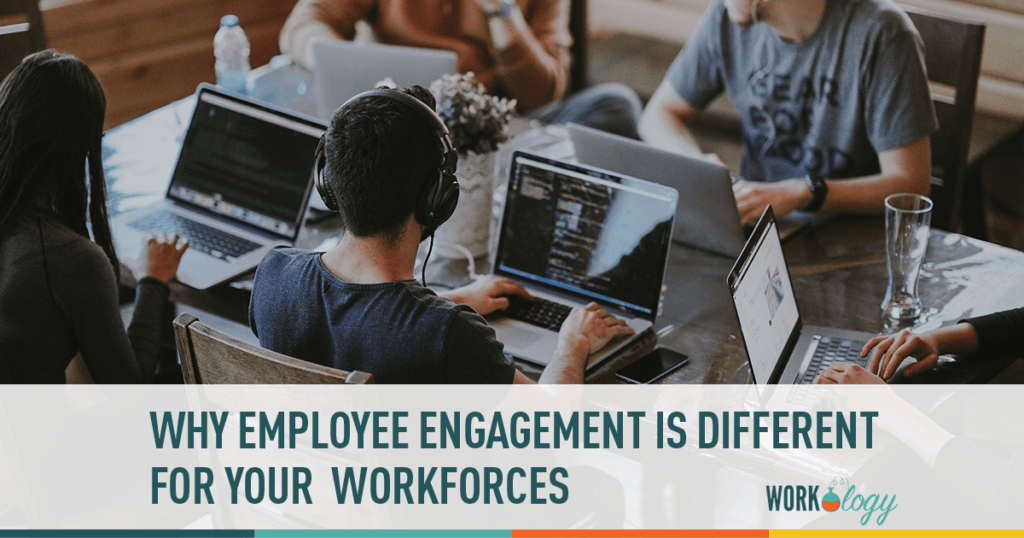This post is sponsored bonusly. See our FTC disclosure at the end of this review.
My dad was a printing pressman my entire life. He worked third shift until I was in the 4th grade, and I remember when he was part of a strike at his plant when contract negotiations failed. It’s because of this, I’ve always carried a special place in my heart for blue and pink collar workers.
When we talk about employee engagement, we’re usually talking about the differences between engagement, turnover, and retention strategies for industries like technology. While important, they only represent a small percentage of our workforce and industries that offer employment. I think it’s important as HR leaders to talk about retention and engagement for blue collar industries including manufacturing, construction, and transportation.
Is Employee Engagement Different for Blue Collar vs. Pink Collar Workers?
According to a recent report from the Conference Board, several blue collar industries — including transportation, health care support, manufacturing, agriculture, mining, and construction — should expect difficulties with filling blue-collar positions in 2019 and beyond. This means that when we’re only talking about engaging tech and other white collar employees, we’re missing a growing gap in engagement from hourly wage earners.
Employee engagement is the emotional commitment an employee has to their work, their team’s goals, and their company’s mission. Engagement is part of the human experience and pretty universal. Engaging and building relationships with hourly or salaried workers means understanding their desired needs, including respect, honesty, and recognition. This can come in the form of intrinsic incentives and/or purpose at work, performance bonuses or raises, as well as company perks and awards.
Engagement is tied directly to employee retention, and we all know the cost of poor retention rates. It also impacts productivity, as engaged employees are 21% more productive than their counterparts. They also take fewer sick days, avert inventory shrinkage, have more satisfied customers, increase workplace safety, and improve product defect rates (Source: Gallup, State of the American Workforce).
Typically when we talk about blue collar jobs, we’re talking about a workforce stereotype of someone who does manual labor, as opposed to the stereotypical white collar jobs that involve sitting behind a desk. These stereotypes go beyond work function, and indicate that blue collar jobs are hourly, tend to pay less than white collar jobs, and even that blue collar workers are in a different (lower) social class and less educated than white collar workers. While not all of these things are true today, there is a difference in what motivates hourly workers versus salaried workers, which we’ll use to reference blue and white collar employees respectively.
Pink collar workers are defined as someone who has a job that is traditionally considered to be women’s work. The term pink-collar worker was used to distinguish female-orientated jobs from the blue-collar worker, a worker in manual labor, and the white-collar worker, a professional or educated worker in office positions. Both pink collar and blue collar hourly workers have similar approaches to employee engagement, while being distinctly different from their white-collar counterparts.
Engaging Your Hourly Workforce
While the motivation for all workers is based on similar incentives, there are some key differences. In its Guide to Blue Collar Recognition, Bonusly says:
White collar employees mainly gain job satisfaction from the nature of their work, a sense of achievement, and a feeling of being appreciated. Blue collar workers are more motivated by salary, peer relations, working conditions, and job security. Both white collar and blue collar employees need to feel appreciated, but understanding what motivates them helps to create the best possible, most relevant, and well-received rewards.
Hourly employees tend to be more incentivized by the value of the dollar and the difference a small production bonus or a $.25 an hour raise can make in supporting their families. Other rewards like paid time off, gift cards, vouchers for experiences, and paid lunches are going to appeal more to hourly workers, as each of these has a monetary value (time = money) associated.
Why Employee Incentives and Rewards Work to Drive Engagement
It’s helpful to tie your incentive and reward structure for hourly employees directly to performance, like safety, inspection, goals met and exceeded, and key performance metrics. Having a program for rewards and employee appreciation that anyone can access via a kiosks in factory break rooms where employees can access Bonusly since many line workers don’t have their phones on them during the work day, mobile app, or text alerts is helpful for an hourly workforce that isn’t checking email all day (but will respond to texts or access an app via their mobile devices while on the job). Having a company-wide recognition platform not only highlights your star players, but incentivizes your entire workforce to perform well.
Finally, keep in mind that some of the world’s toughest workers are hourly workers. Not only is much of blue collar work physically demanding, it can also involve long hours and stressful situations. It’s important for HR to take the lead on showing the company’s appreciation for the time and effort they contribute to the company in ways beyond the paycheck, remember those intrinsic incentives and sense of purpose at work. A recognition and rewards platform like Bonusly not only ensures you’re not missing your star players, it also streamlines the incentive and share process with company shout outs and highlighting standout employees.
FTC Disclosure: We received compensation for mentioning and reviewing the product listed above as part of one of the services we offer our clients. Regardless, we only recommend products or services I use personally and believe will be good for my readers. We are disclosing this in accordance with the Federal Trade Commission 16 CFR, Part 255: Guides Concerning the Use of Endorsements and Testimonials in Advertising.









